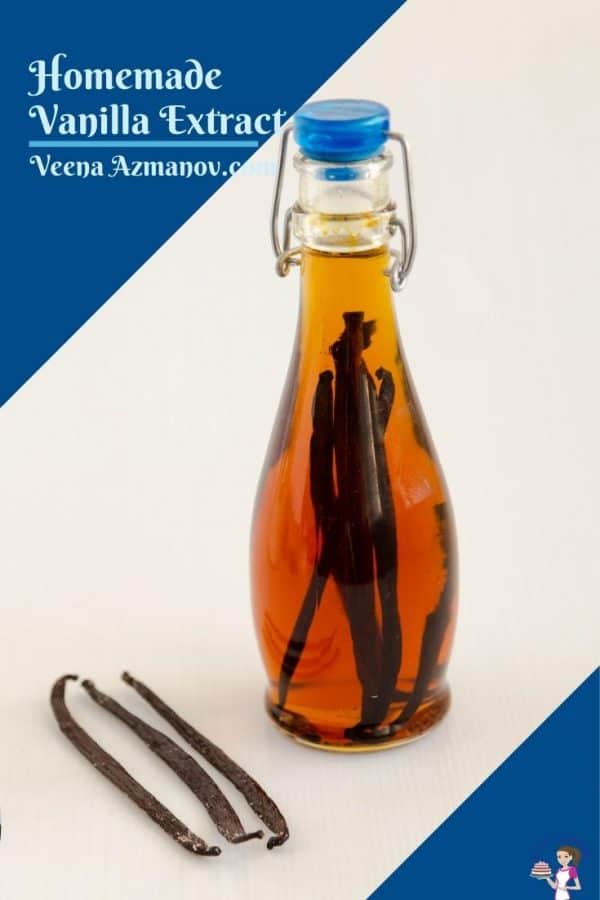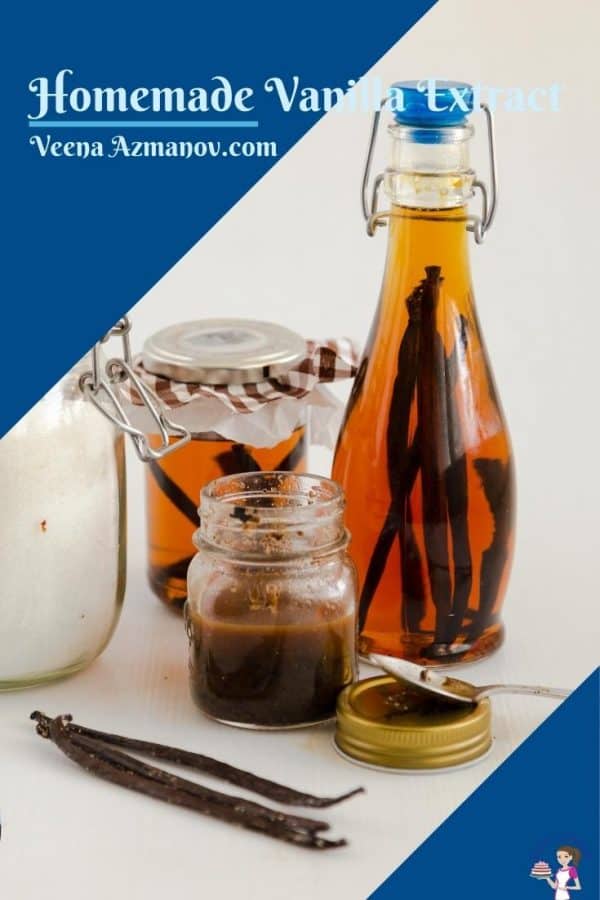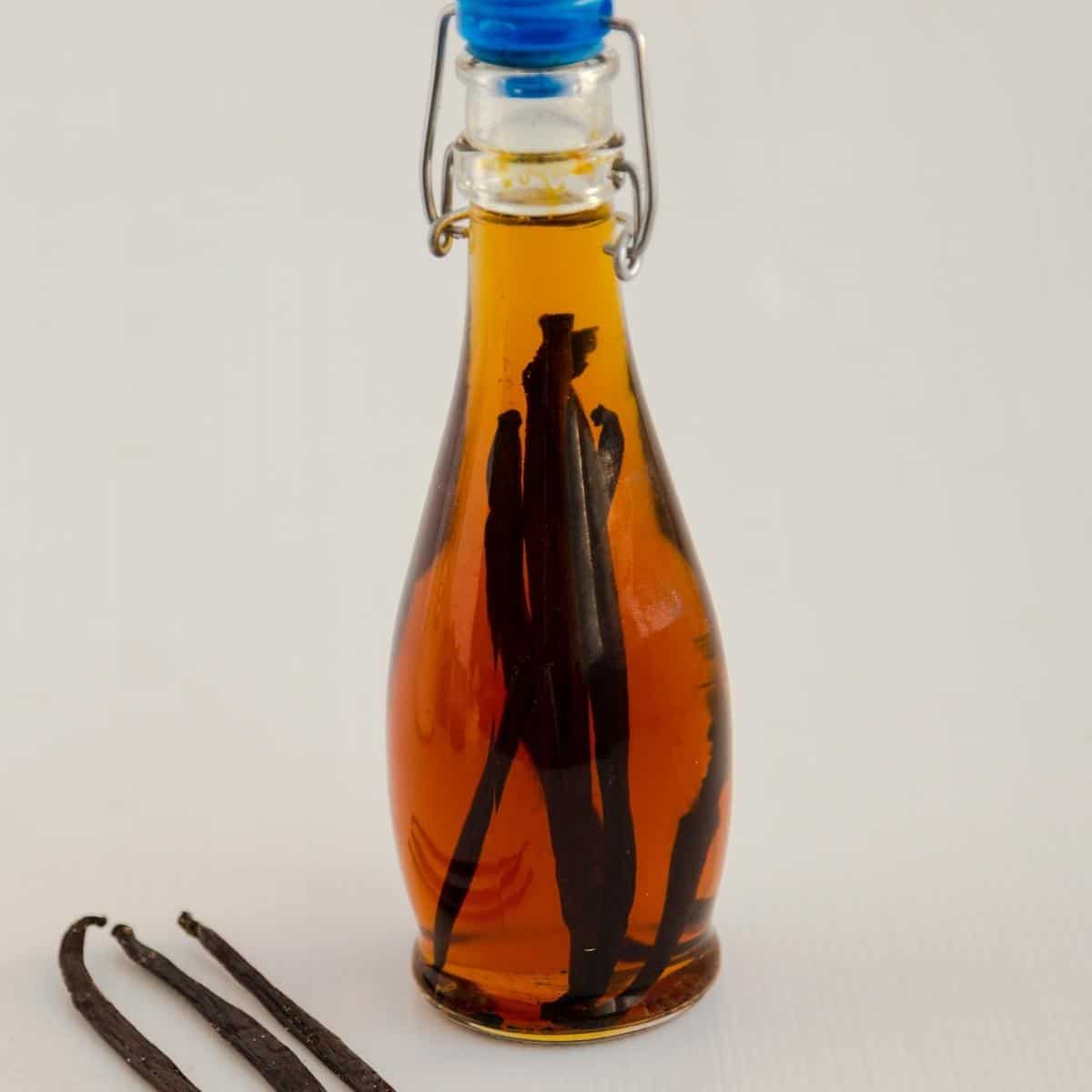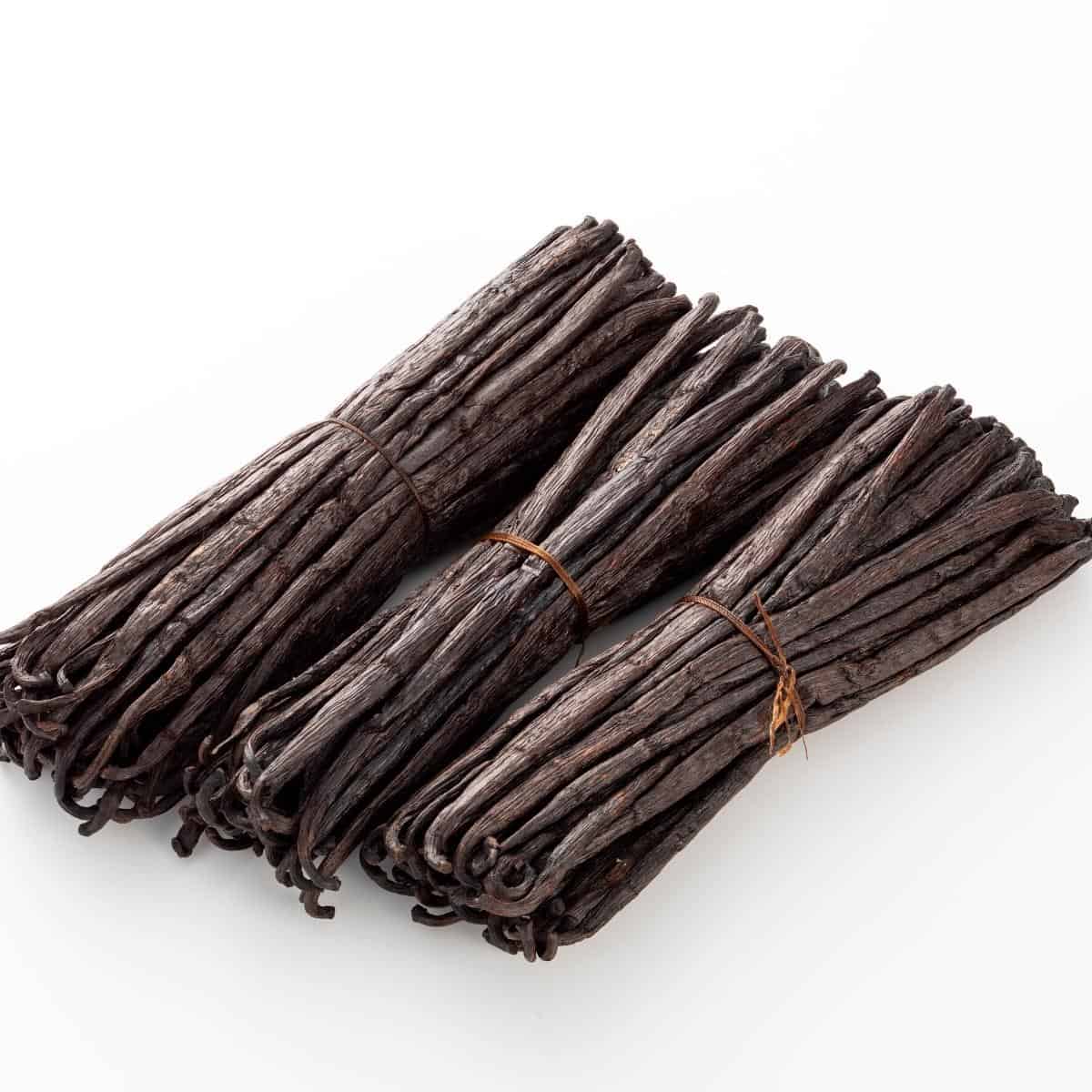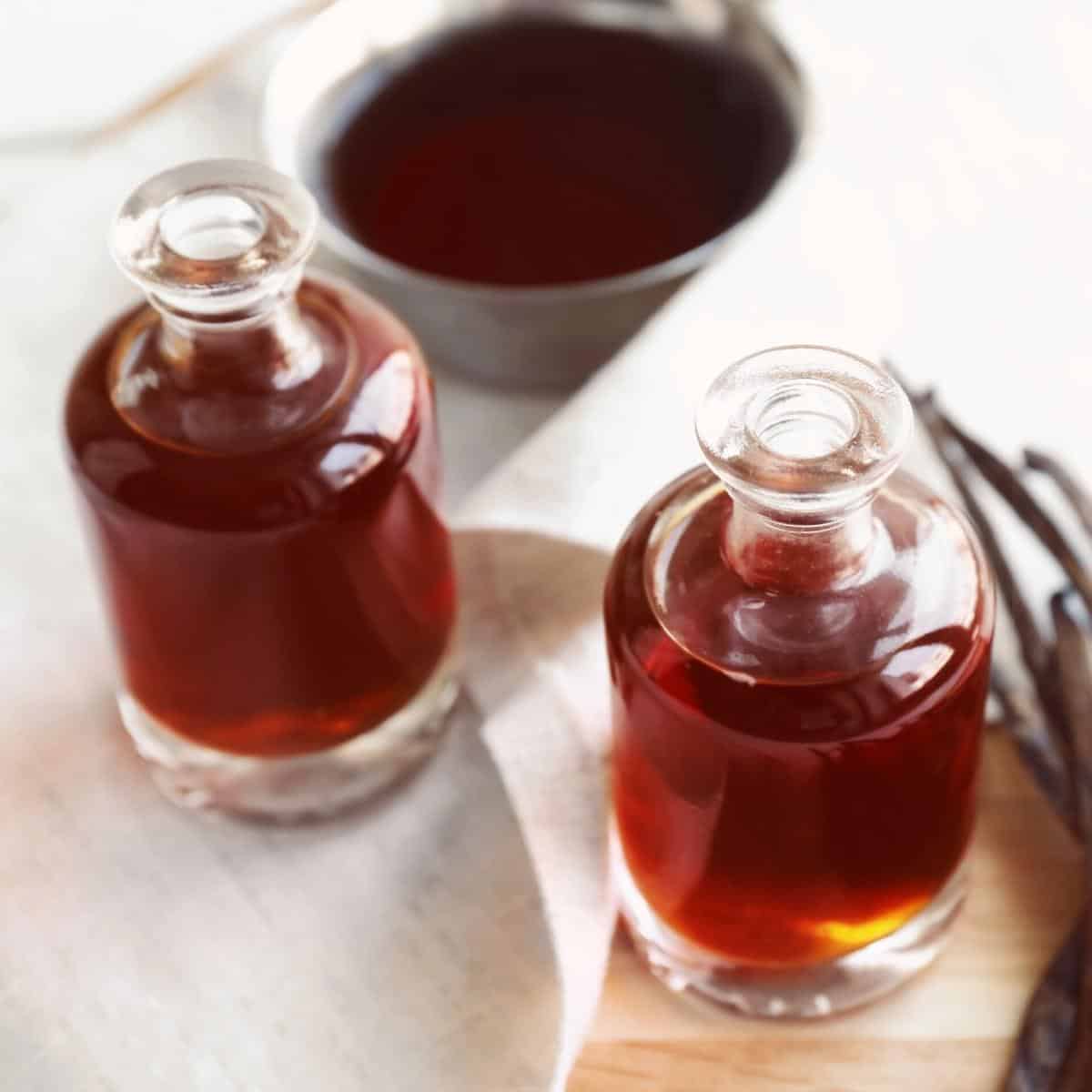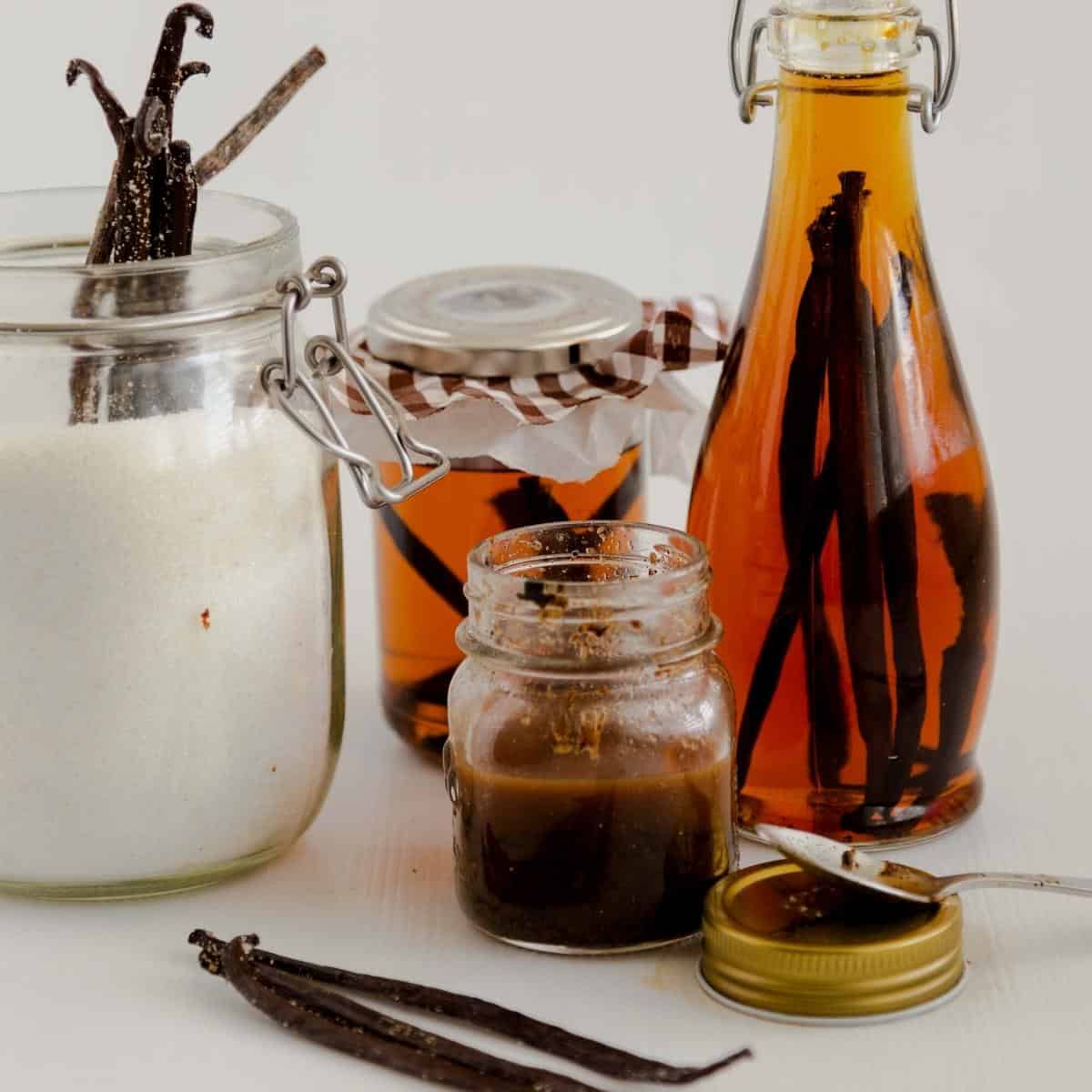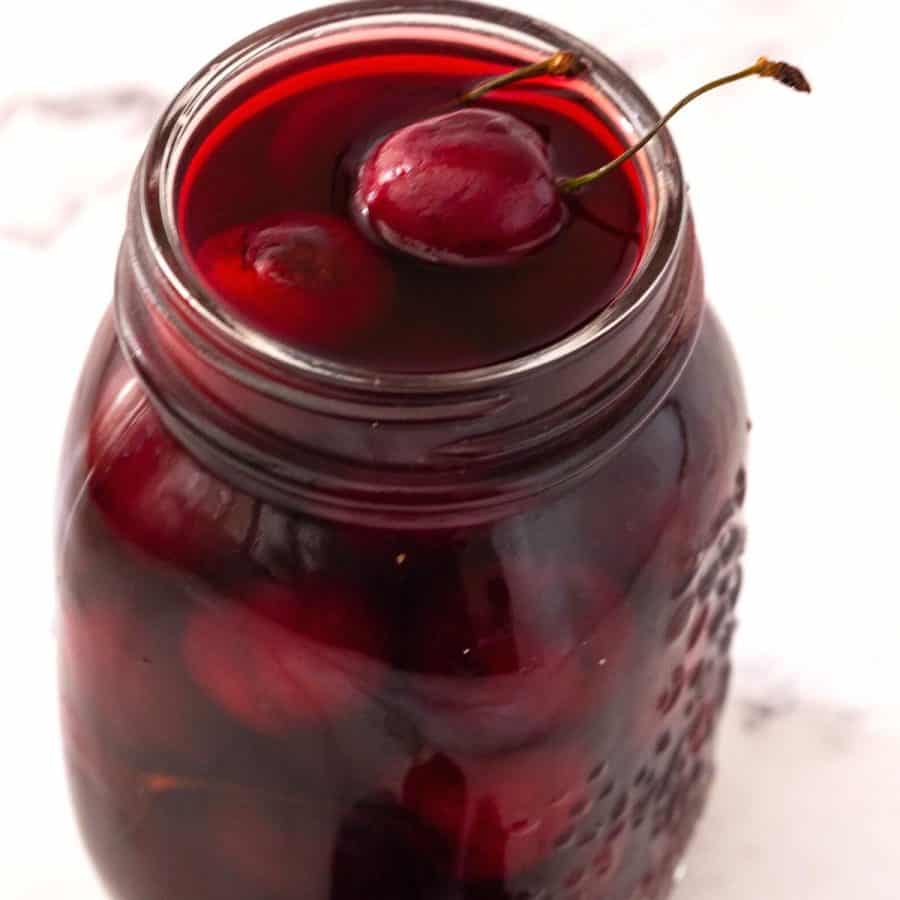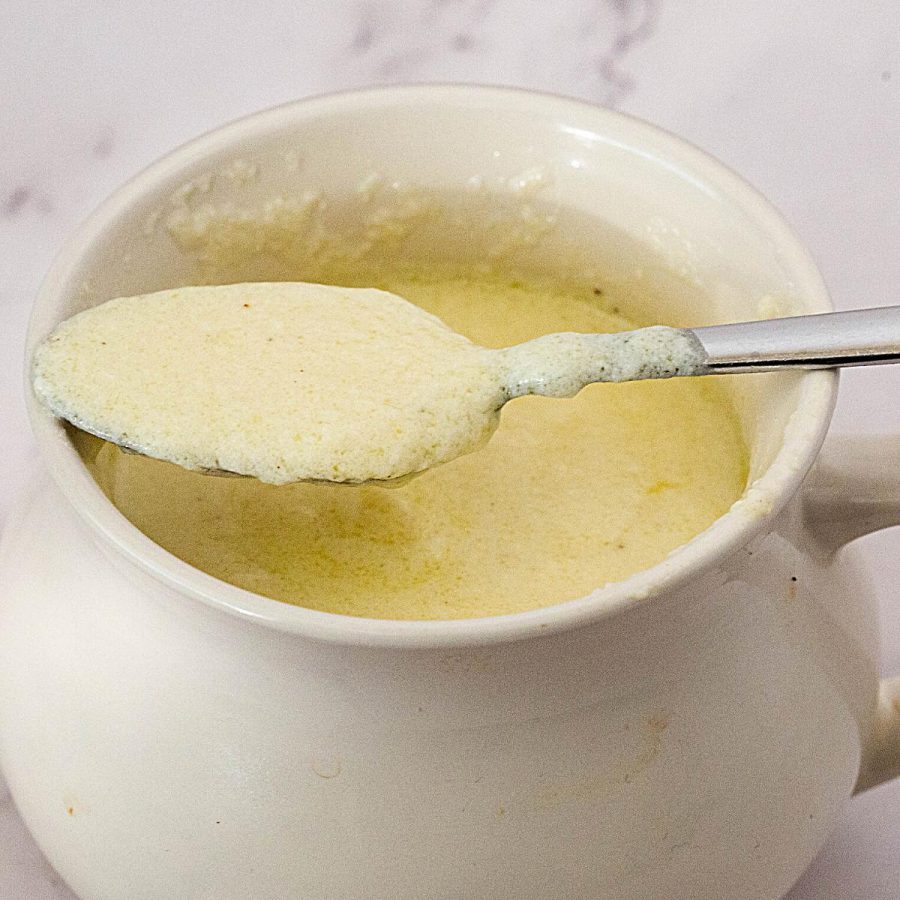Vanilla extract is a liquid flavoring made by soaking vanilla beans in alcohol to extract their flavor compounds. It’s a popular ingredient in baking and cooking, adding a rich and complex vanilla flavor to dishes. The high cost of vanilla is mainly due to the labor-intensive and time-consuming process involved in its cultivation and production. The combination of the labor-intensive cultivation, hand-pollination, long curing process, and the fact that vanilla orchids only produce beans for a few months of the year all contribute to the high cost of vanilla. Additionally, factors such as natural disasters, diseases, and political instability in vanilla-producing regions can also impact the price and availability of vanilla beans.
Why make your own vanilla extract at home
Cost-Effective: Making your own vanilla extract can be more cost-effective than buying it pre-made, especially if you use high-quality vanilla beans and alcohol. Customization: Making your own vanilla extract allows you to customize the flavor and intensity to suit your preferences. You can control the type of vanilla beans used and the strength of the extract by adjusting the ratio of beans to alcohol. Quality Control: Homemade vanilla extract allows you to control the quality of the ingredients, ensuring that you’re using high-quality vanilla beans and alcohol without any additives or preservatives. Flavor: Homemade vanilla extract often has a richer and more complex flavor than store-bought varieties, as you can use fresh, high-quality vanilla beans and control the extraction process. Gifts: Homemade vanilla extract makes a thoughtful and unique gift for friends and family who enjoy baking and cooking. It’s a personalized gift that shows you put thought and effort into creating something special.
Ingredients and substitutes
Vanilla – There are several different types of vanilla beans, each with its own unique flavor profile and characteristics. Each type of vanilla bean has its own unique flavor profile, and the choice of which to use often depends on personal preference and the specific flavor profile desired in the recipe: Madagascar Vanilla Beans: Also known as Bourbon vanilla beans, these are the most common and widely used vanilla beans. They have a rich, creamy flavor with sweet and buttery notes. Madagascar vanilla beans are often used in baking and desserts. Tahitian Vanilla Beans: Tahitian vanilla beans are known for their floral and fruity aroma, with cherry-like undertones. They are often used in dishes where a more delicate vanilla flavor is desired, such as in custards, creams, and fruit desserts. Mexican Vanilla Beans: Mexican vanilla beans have a bold and spicy flavor, with hints of cinnamon and nutmeg. They are often used in chocolate-based desserts and savory dishes. Indian Vanilla Beans: Indian vanilla beans have a similar flavor profile to Madagascar vanilla beans, with rich and creamy notes. They are often used in Indian and Middle Eastern desserts. Indonesian Vanilla Beans: Indonesian vanilla beans are known for their smoky and woody flavor, with hints of chocolate. They are often used in savory dishes and marinades. Ugandan Vanilla Beans: Ugandan vanilla beans are known for their bold and robust flavor, with earthy and smoky notes. They are often used in baking and desserts. Sugar – You can use granulated sugar or caster sugar to make vanilla sugar. Both types of sugar work well for infusing with vanilla flavor. Granulated sugar has larger crystals and is the most common type of sugar used for making vanilla sugar. Caster sugar has finer crystals, which can help the vanilla flavor infuse more quickly, but either type of sugar will work.
Step by step: Homemade vanilla extract
Split the vanilla bean in the center but leave it intact. Scrape the center seeds out. Place the vanilla beans in a mason jar or airtight glass jar that’s at least the height of the vanilla beans Pour the vodka over the beans until the bottle is full. Seal the jar tight so the alcohol won’t evaporate. Leave in a cool dry place to steep for a minimum of three months shaking the bottle once every week.Note – In about a month or two, the color for the vodka will change to a deep vanilla color and when you open the bottle it will smell like vanilla, not vodka. The longer it stays the more intense the vanilla flavor will be.
What is Madagascar Bourbon vanilla extract?
Madagascar vanilla extract is a type of vanilla extract made from vanilla beans grown in Madagascar, an island nation off the southeast coast of Africa. Madagascar is known for producing some of the highest quality vanilla beans in the world, known as Bourbon vanilla beans. Madagascar vanilla extract is prized for its rich and creamy flavor profile, with sweet and buttery notes. It is the most common type of vanilla extract used in baking and cooking due to its versatile flavor profile and high quality. Madagascar vanilla extract is often used in a wide range of recipes, from cookies and cakes to custards and ice creams, to add a delicious vanilla flavor.
Tips for Success
Making homemade vanilla extract is easy and requires just two ingredients: vanilla beans and alcohol. Here are some tips to ensure success:
Choose High-Quality Vanilla Beans: Look for plump, moist vanilla beans with a strong aroma. Madagascar Bourbon vanilla beans are a popular choice for making vanilla extract. Use the Right Alcohol: The most common alcohol used for making vanilla extract is vodka because it has a neutral flavor that won’t overpower the vanilla. You can also use bourbon, rum, or brandy for a different flavor profile. Ratio of Vanilla Beans to Alcohol: A common ratio is 5-6 vanilla beans per 1 cup (240 ml) of alcohol. Split the vanilla beans lengthwise, leaving them attached at one end, to expose the seeds inside. Choosing the Extraction Time: The longer you let the vanilla beans steep in the alcohol, the stronger the flavor will be. Most recipes recommend steeping for at least 8 weeks, but for the best flavor, aim for 6-12 months. Shake the bottle occasionally to mix the ingredients. Storage: Store the vanilla extract in a cool, dark place, such as a pantry or cupboard. Avoid storing it in direct sunlight, as this can degrade the flavor over time. Labeling and Dating: Be sure to label your homemade vanilla extract with the date it was made. This will help you keep track of how long it has been steeping and when it will be ready to use. Reusing Vanilla Beans: After you’ve used the vanilla extract, you can rinse off the vanilla beans, let them dry, and then use them to make another batch of vanilla extract or for other recipes that call for vanilla beans. Experiment: Don’t be afraid to experiment with different types of vanilla beans and alcohols to create unique flavor profiles.
What is the difference between Vanilla extract, bean paste and sugar
Vanilla extract, vanilla bean paste, and vanilla sugar are all used to add vanilla flavor to dishes, but they differ in their form and intensity of flavor. Here’s how they differ:
Vanilla Extract: Vanilla extract is made by soaking vanilla beans in alcohol to extract their flavor compounds. It has a strong, concentrated vanilla flavor and is the most commonly used form of vanilla in baking. Vanilla extract is typically used in liquid form and is measured by the teaspoon or tablespoon. Vanilla Bean Paste: Vanilla bean paste is a thick, syrupy mixture made from vanilla extract, vanilla bean powder, sugar, and sometimes thickening agents like xanthan gum. It contains vanilla bean specks, which gives it a similar appearance to freshly scraped vanilla beans. Vanilla bean paste has a rich and intense flavor, similar to that of vanilla extract, but with the added visual appeal of the vanilla bean specks. It can be used in place of vanilla extract in recipes, with the added benefit of the vanilla bean specks for visual appeal. Vanilla Sugar: Vanilla sugar is made by burying a vanilla bean in a jar of sugar and letting it sit for a few weeks to infuse the sugar with vanilla flavor. It has a subtle vanilla flavor and is used as a sweetener in baking and beverages. Vanilla sugar can be used in place of regular sugar in recipes to add a hint of vanilla flavor.
When should you use vanilla extract, bean paste, or vanilla sugar
You can use vanilla extract, vanilla bean paste, or vanilla sugar depending on your recipe and personal preference:
Vanilla Extract: Vanilla extract is a versatile option and can be used in most recipes that call for vanilla flavoring. It’s particularly useful in recipes where liquid ingredients are already present, such as cake batters, cookies, and frostings. Use it when you want a strong, pure vanilla flavor. Vanilla Bean Paste: Vanilla bean paste is a great alternative to vanilla extract when you want the visual appeal of vanilla bean specks in your dishes. It’s ideal for recipes where you want to see the vanilla flecks, such as in custards, ice creams, and whipped creams. It also has a rich flavor similar to vanilla extract. Similarly, bean paste is priceless in recipes such as vanilla pastry cream, vanilla pudding, or vanilla-based desserts like vanilla ice cream, and vanilla bavarian cream as compared to strawberry Bavarian cream. Vanilla Sugar: Vanilla sugar is perfect for adding a subtle hint of vanilla flavor to recipes where you also need sugar, such as in coffee, tea, or sprinkled over baked goods before baking. It’s a great way to infuse a delicate vanilla flavor into your dishes without adding extra liquid. I also like to use vanilla sugar for my pies, tarts, creme brulee.
Bake a Moist, Fluffy Vanilla Bean Cake Every TimeBourbon CherriesHomemade Vanilla Sugar (2 ingredients)10 Best Gifts for Bread BakersEasiest Eggnog Recipe
Frequently asked questions
Did you LIKE this recipe? Save it for later. You can find my recipes on Pinterest. Follow me on Facebook, Twitter, and Instagram.Subscribe, and I’ll send you new recipes right to your inbox.
Thank you for sharing - Save for later
